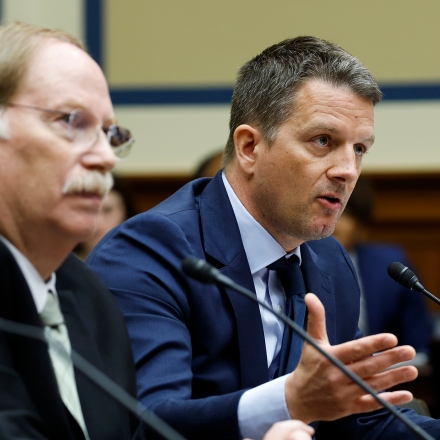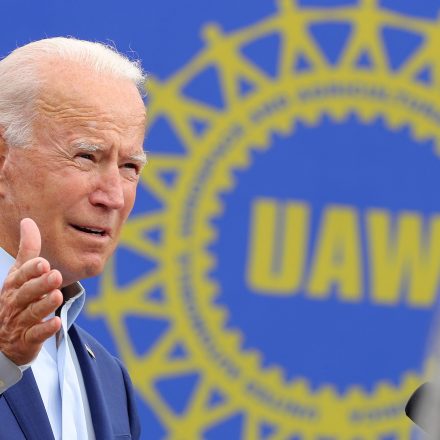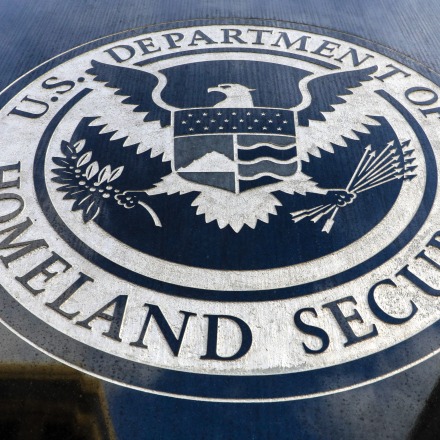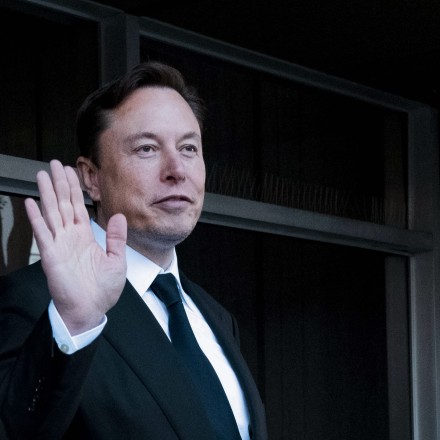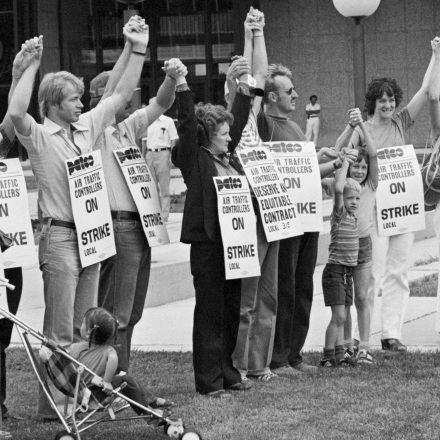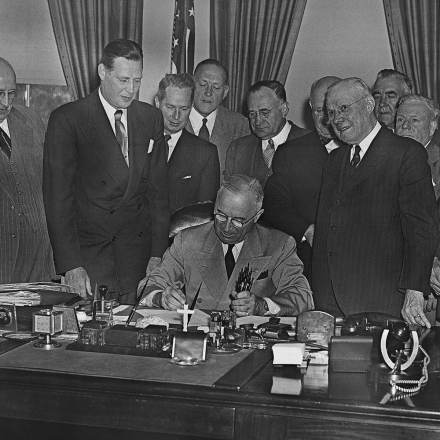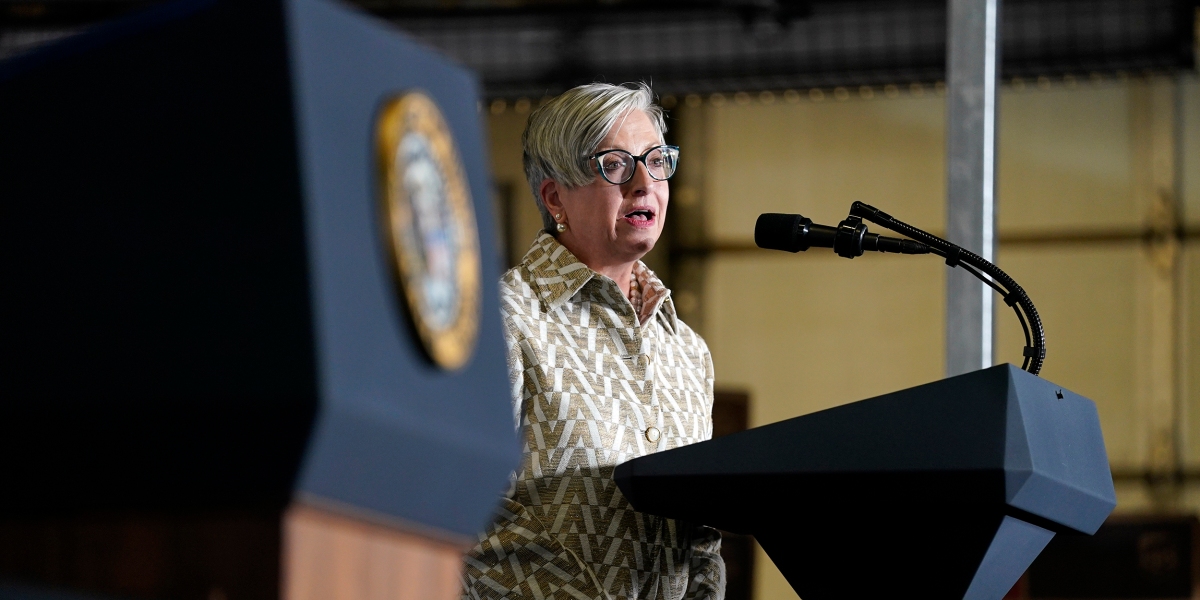
Photo: Nathan Laine/Bloomberg via Getty Images
What does EloN Musk firing 6,500 people at Twitter have to do with the Writers Guild of America and actors in SAG-AFTRA going on strike? How is Meta axing 21,000 employees connected to more and more doctors wondering if they have to unionize? And how is this all related to Donald Trump taking a government map of Hurricane Dorian’s projected path in 2020 and scrawling on it with a Sharpie?
The answer is that America’s owners have opened a new front in their battle against everyone else, declaring war on the class of technocrats who once were their greatest allies.
In Adam Smith’s famed 1776 disquisition on economics, “The Wealth of Nations,” he ponders the behavior of the “great proprietors” of feudalism. They owned the most valuable property available — i.e., land — and with their income from this property supported a class of attendants and retainers, and, below them, a class of tenants of the land.
But the proprietors gradually lost the taste for this. They eventually wished to consume “the whole surplus produce of their lands … without sharing it either with tenants or retainers. All for ourselves and nothing for other people, seems, in every age of the world, to have been the vile maxim of the masters of mankind.”
“The Wealth of Nations” is full of this kind of ferocious criticism of the psychology of the powerful, so it’s peculiar how today’s powerful champion the book so frequently. There was even a vogue among male members of the Reagan administration for wearing ties with little pictures of Adam Smith. The most likely explanation here is America’s top apparatchiks don’t waste their time reading stuff.
In any case, Smith’s perspective was generally correct: both about the way societies can develop three different tiers, and the overall view of the people at the top of them. Their vile maxim — all for ourselves and nothing for other people — seems to be reaching a level of virulence Americans haven’t experienced in living memory.
Like feudal England, America has, roughly speaking, three classes. At the top are today’s great proprietors. The basis of their wealth is no longer mainly held in land but in direct ownership of their own businesses plus financial instruments including corporate stocks and bonds. The top 1 percent owns over half of U.S. corporate stock.
The people just below them are no longer attendants and retainers but technocrats. They’re the people who go to school to develop the specialized skills that are necessary to keep society running day to day: doctors, lawyers, scientists, computer programmers, engineers. (Journalists are also technocrats but among the weakest of the group.) The rest of the top 10 percent — i.e., the 9 percent — owns almost all the rest of U.S. corporate stock.
Then there’s everyone else. They’re no longer tenant farmers, but they still have to get up every day and clock in at Home Depot and Walgreens and Chipotle to cultivate the possessions of the great proprietors. This working class has the least leverage and the fewest options.
In retrospect, it’s clear America’s masters of mankind were shocked enough by World War II to dial the vile maxim back. As President Franklin Delano Roosevelt said in his 1944 State of the Union address, “Necessitous men are not free men. People who are hungry, people who are out of a job are the stuff of which dictatorships are made.” Even if you were the son of a National City Bank executive destined to follow in your father’s executive footsteps, you would be able to hear Roosevelt’s message after spending time facedown in the mud on Okinawa, covered in your platoonmate’s viscera.
Thus the great proprietors were willing to share quite a bit with the bottom two classes — for a while. During the three decades after the war, median wages went up hand in hand with productivity. That is, as America overall got richer, so did regular people.
But by the 1970s, the great proprietors had gotten tired of this arrangement. The generation with direct adult experience of how destabilized societies can explode into a worldwide slaughterhouse was retiring and dying.
So the masters of mankind decided to alter the deal vis-à-vis the working class. This was such a gargantuan success, it’s amazing they pulled it off without bloodshed. If the minimum wage had continued to go up in step with productivity, it would now be not $7.25 but about $25 an hour. A recent RAND study found that if the U.S. had remained as equitable as it was in 1975 for the next 43 years through 2018, the bottom 90 percent of Americans would have earned an extra $47 trillion. Instead that money flowed in a great flood to the top.
Meanwhile, the technocratic class watched this process with equanimity. Technocrats generally identify upward, and ally themselves with the great proprietors against everyone else. There had been a proprietor-technocrat peace for a long, long time, with the technocrats having the power to garner a big slice of society’s good things for themselves. This included not just money but also prestige and control over their working lives, even as they served as junior partners in the coalition.
The explosion of new wealth in Silicon Valley had also made the boundaries between the two classes enticingly fuzzy. Bill Gates is the son of Bill Gates Sr., who was a prominent corporate lawyer in Seattle. Billionaire Sean Parker, founder of Napster and the first president of Facebook, is the son of an oceanographer at the National Oceanic and Atmospheric Administration.
But just as America’s masters of mankind got tired of sharing with the U.S. working class, they’ve now become fatigued with their deal with the technocrats.
Something has clearly changed in the psychology of the people at the top of America.
It’s difficult to measure or define this. Like Galadriel at the start of the “Lord of the Rings” movies, you have to feel it in the water and smell it in the air. But something has clearly changed in the psychology of the people at the top of America, as Musk and Trump demonstrate every time they reach for their smartphones and start typing.
It’s partly about money. But the vile maxim is about everything, not just cash. What drives our overlords into a towering rage today is that technocrats still have some power to define reality. And the technocrats keep telling them they can’t have all their heart’s desires instantaneously.
Musk wants to live in a world of berserk ultra-right conspiracism in which all of humanity looks to him for his discoveries about The Truth. When a Twitter engineer explained to him that his engagement was down not because the algorithm was broken, but because people were losing interest in Musk, Musk fired him. Trump wanted to claim that Hurricane Dorian might hit Alabama, so he just drew that on the map produced by NOAA (where Sean Parker’s father had worked) and made the head of NOAA frightened he’d lose his job. Doctors want to decide what their patients need but are losing that power to private equity.
Right now, we’re just at the start of what will be a titanic war between the masters of mankind and the technocrats. The masters hold most of the cards, including the fact that the technocrats largely don’t understand yet that they’re in a war and are not ready for it. Thus the technocrats will likely be defeated, unless they can do something they’ve never done before: Forge an alliance with the working class.
